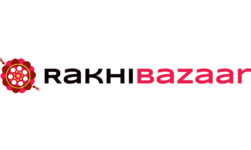
Despite the size, it is always a tricky and mammoth task to run a business with complete authority and transparency as it requires maximum utilization of each and every asset that exists within the business. The gadgets of information technology is an essential part of today’s corporate scenario as they make our life easier than ever. Therefore, to be functionalized to the fullest, these devices need to be cared for, maintained and supported by technicians from time to time.
Asset management is a process that helps to bridge the gap between the data and the money. The process begins with defining a plan to acquire needed technology and ends with ensuring that all of your assets are being used to their fullest potential.
At your home, keeping a device or cutting it off might be a discussion of joy, space or luxury. But when it comes to a workstation, the decision relies on a simple question- Do the profit that comes out of the device is greater than its cost? If an IT tool is frequently going on maintenance, it’s a money pit and getting rid of it would be a smart choice.
The IT asset management process falls under the category of service management, which is the process of managing services. Asset management is one component of service management and it focuses on gathering, documenting, tracking, analyzing and reporting data related to the hardware and software assets utilized by an organization.
Types of IT Asset Management
Asset Management is a big domain and can mean different things. Some of the most common types of asset management are:
● IT Asset Management
● Digital Asset Management
● Software Asset Management and License Management
Why Is It Important?
An important aspect of IT asset management is that it reduces IT costs. This is achieved by eliminating the need to maintain old, outdated systems and software. In addition, there is a reduction in the number of errors that occur when new technologies are implemented, which results in a higher productivity. We have pointed out the main Points below
Manage the Data Belongs to Assets with Ease
It is illogical to keep the complete record of an asset manually such as the date of purchase, cost and the investment in maintenance etc. Giant organizations or enterprises usually have a separate department that manages and monitors assets, but small and mid-size businesses may find it an extra load to their treasure. In such conditions, opting for one of the Best IT Asset Management Software that keeps the data allied with the assets in a centralized database can cut the unnecessary hazards and will certainly make you able to get the maximum out of the investment.
Accessing Asset History is a Piece of Cake with AMS
Such software can maintain data or records of lease assets within a span of a year and more. This record may include lease agreements & types, terms and conditions of the lease, start and end date, name of owner and lessee, monthly cost of use and maintenance, fair value in the market and more. This management software for assets enables you to upload these valuable documents within the blink of an eye and to access them later whenever needed, rather than searching through the folders of computers or digging out cabinets in the workplace.
It Lets you Avoid Those Unwanted Scenes
Remember those awkward moments when you can’t find something that you need the most at that particular point in time? This highly functional tool eliminates the probability of occurring such moments as it makes it possible to search for assets using diverse types of categories such as owner name, type of asset, purchase date, install date, location, warranty or guarantee date and more.
Along with that, it saves you from being puzzled with several alerts or notifications at the same time. For instance, If the two air conditioners at your office are on alert mode and need instant support, but you have time and budget to repair only one between them. In such cases, this tremendous software comes into the picture as it aids you to make a decision by accessing the contract and service history of both air conditioners. Now, you can simply and swiftly determine which AC needs to be repaired instantly and which can be postponed for later.
On the whole, asset management software saves your time and energy, moreover automates the process of managing the company’s assets as it involves a bunch of managed processes and functional capabilities. Additionally, the AMS collaborates the various sections within the organization or corporate structure counting administration, human resource, finance, legal and procurement being a few among the major players naturally. The last and foremost thing we should have in mind about AMS is that it does not only belong to IT devices or audits and is not just a one-time practice.






